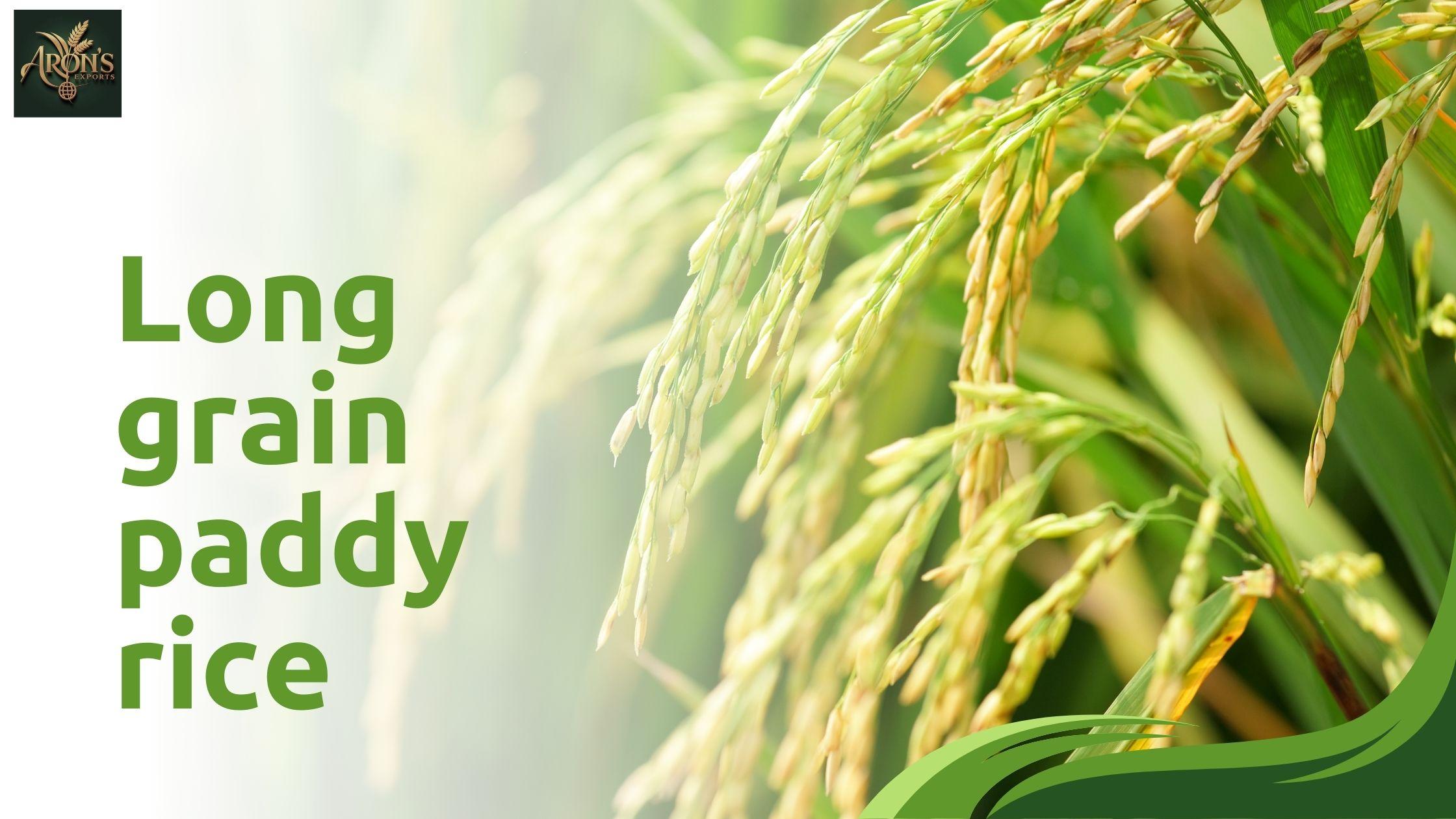The Global Demand for Long Grain Paddy Rice in 2025

Rice has long been one of the most important staple foods in the world, feeding billions of people daily. Among its many varieties, long grain paddy rice continues to hold a dominant position in global markets due to its unique texture, nutritional profile, and versatility in countless cuisines. As we step into 2025, global demand for long grain rice is experiencing remarkable growth, fueled by changing consumer preferences, rising health awareness, and the increasing focus on organic certified paddy rice.
This blog explores the trends, challenges, and opportunities driving the global demand for long grain rice in 2025 and why it remains an essential part of both local and international food economies.
Why Long Grain Paddy Rice is in High Demand
Long grain rice is highly favored for its distinct characteristics:
-
Non-sticky grains: Unlike short or medium varieties, long grains remain separate after cooking, making them ideal for dishes like biryani, pilaf, and fried rice.
-
Neutral taste: Its subtle flavor pairs well with diverse cuisines, from Asian to Mediterranean and Western.
-
Nutritional value: Long grain rice provides a steady source of carbohydrates and energy, while whole-grain and organic forms also deliver higher fiber, vitamins, and minerals.
Global consumers, particularly in countries with rapidly growing populations such as India, China, Nigeria, and Indonesia, continue to prefer this variety for both daily meals and special culinary traditions.
The Shift Towards Organic Certified Paddy Rice
Health-conscious consumers are increasingly demanding organic certified paddy rice, which is cultivated without harmful pesticides or chemical fertilizers. This shift is not just about health benefits; it also reflects a broader global movement toward sustainability and environmental responsibility.
-
Health benefits: Organic rice reduces exposure to toxins and may retain more nutrients due to chemical-free farming.
-
Sustainability: Organic farming promotes soil fertility, water conservation, and biodiversity.
-
Market demand: Premium buyers in Europe, North America, and the Middle East are driving higher imports of certified organic varieties, paying more for guaranteed quality and traceability.
This trend is expected to dominate rice trade in 2025, with farmers, suppliers, and exporters adapting to meet stringent organic certification standards.
Key Global Markets Driving Growth
The global rice market is diverse, but certain regions are particularly influential in shaping the demand for long grain paddy rice in 2025:
-
Asia-Pacific
Asia remains the largest producer and consumer of rice. Countries like India, Thailand, and Vietnam are major exporters of long grain rice, catering not just to domestic needs but also to international buyers. Rising middle-class populations and urbanization in these countries will continue to fuel rice consumption. -
Africa
Africa is one of the fastest-growing rice-consuming regions. Nigeria, Ghana, and Senegal have seen surging demand for long grain varieties due to their suitability for local dishes like Jollof rice. Imports of organic certified paddy rice are also on the rise, reflecting changing food trends and quality expectations. -
Middle East
The Middle East has long been a hub for premium rice imports. Long grain basmati and jasmine varieties are especially popular, with increasing interest in organic options driven by health and lifestyle awareness. -
North America & Europe
These regions primarily depend on imports. Consumers here are drawn to organic, non-GMO, and sustainably grown rice. Restaurants, retailers, and health food brands increasingly prioritize suppliers offering traceable and certified long grain rice.
Technology and Innovation in Paddy Rice Farming
The global rice sector is not untouched by innovation. In 2025, technology plays a major role in boosting yield, quality, and sustainability:
-
Precision farming: Use of drones, soil sensors, and data analytics helps farmers optimize water use and fertilizer application.
-
Climate-resilient varieties: Scientists are developing long grain rice strains that can withstand droughts, floods, and temperature fluctuations.
-
Organic farming techniques: Bio-fertilizers, natural pest control, and crop rotation are enhancing organic yields while meeting certification standards.
Such advancements ensure that both conventional and organic rice farming can keep pace with rising global demand.
Challenges in Meeting Global Demand
While the outlook is promising, the rice industry faces some key challenges in 2025:
-
Climate change: Extreme weather events and unpredictable rainfall patterns disrupt yields and supply chains.
-
Rising production costs: Organic farming, though profitable in the long term, requires higher initial investments.
-
Certification hurdles: Farmers need to meet strict international standards for organic certified paddy rice, which can be time-consuming and expensive.
-
Trade restrictions: Geopolitical tensions and export bans by major producers may affect global supply and pricing.
Overcoming these challenges will require collaborative efforts among governments, farmers, exporters, and private companies.
The Role of Exporters and Suppliers
Exporters and suppliers act as the bridge between producers and international buyers. They not only ensure quality control but also handle packaging, logistics, and certification processes. Companies like Aron Baijnauth are playing an active role in connecting farmers with global markets, ensuring that buyers receive reliable supplies of both conventional and organic long grain rice.
In addition, these suppliers are instrumental in educating farmers about international standards, helping them adapt sustainable practices, and ensuring fair trade opportunities.
The Future of Long Grain Rice in 2025 and Beyond
Looking ahead, the future of long grain rice is bright. Demand is projected to increase steadily, driven by population growth, rising incomes, and evolving dietary preferences. Organic and sustainable varieties will command premium markets, while technology-driven farming will enhance efficiency and resilience.
International collaborations, certification programs, and consumer education will further strengthen trust and transparency in the supply chain. As we move deeper into 2025, global rice trade is expected to expand, with long grain paddy rice and organic certified paddy rice taking center stage in meeting global food needs.
Final Thoughts
The year 2025 marks an important turning point for the global rice industry. Long grain rice continues to be the variety of choice for billions worldwide, while organic certified options are gaining momentum as consumers demand healthier, sustainable food.
With steady innovation, improved farming practices, and responsible suppliers like Aron Baijnauth, the rice sector is well-positioned to meet global demand while promoting health, sustainability, and economic growth.







